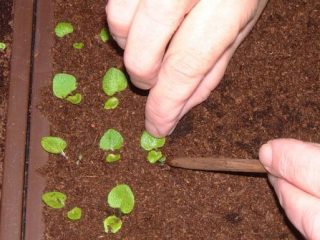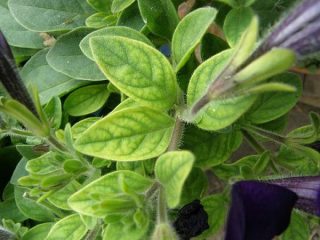Content
Lush petunia bushes with bright flowers delight the eye throughout the warm season. And although it is generally accepted that this plant is unpretentious, it still needs timely and proper care. In particular, the abundance of their flowering will depend on how correctly fertilizers are selected for feeding petunias.
If you are a novice gardener, then you have probably wondered more than once how to feed petunia for abundant flowering in order to achieve a long-lasting effect. There are several secrets that we will tell you about in this article.
Types of fertilizers
At home, amateur flower growers usually use liquid preparations for feeding. These can be solutions with a high concentration of nutrients. Before applying fertilizers to the soil in which petunia grows, they must be diluted with water. Depending on what result you want to achieve, you can purchase one of the most popular liquid preparations for petunia: Garden of Miracles, Ideal, Uniflor, Bona Forte, Agricola.
In addition, in specialized stores you can purchase a variety of dry mixtures in powder form or granular fertilizers.They, as a rule, are also diluted with water in the proportion indicated in the instructions for using fertilizers for flowering plants. Some of the most common types of dry mixtures are Plantofol, Master and Kemira Lux.
There are also long-lasting fertilizers on sale. These include superphosphates, Agricola capsules, nitroammophoska, Ethisso, etc. The soil with these compounds is gradually filled with useful substances under the influence of water while watering the plant. Granules of long-lasting fertilizer are added to the soil before planting petunias. This is very convenient, since fertilizer is applied once for the whole season. However, some gardeners have noticed that this kind of feeding is not enough for the development of a lush flowering plant.
Let's say a petunia bush changes the color of its leaves from green to purple and the number of buds has decreased. These are sure signs that the flower lacks phosphorus. With the use of liquid preparations for feeding, this problem is quickly solved. To do this, one drug is changed to another, which contains more phosphorus and that’s it. If the petunia is restored, then the disease has been identified correctly. And if not, then you need to continue to look for the reason.
But if you use only long-lasting compounds, then most likely the flower will die very quickly. If you overdo it and add more phosphorus to the substrate than necessary, which can happen when applying long-lasting fertilizers, the flower will die. This occurs due to the fact that the nutrient will remain in the pot for a long time.
Experienced gardeners, as a rule, do not use long-lasting fertilizers. But even if they use them in their practice, it is 2 or 3 times less than the normalized dose.
Primary application of fertilizers
The first feeding of petunias is carried out approximately 2 weeks after sowing the seeds. This way, the plants will gain green mass faster, making it easier to form a bush. In this case, complex fertilizers saturated with phosphorus and nitrogen are well suited.
Soluble mixtures such as Ideal, Garden of Miracles and Bona Forte are perfect for primary processing. In addition, at this stage of petunia development, you can use dry mixtures such as Master and Plantofol.
Feeding petunia seedlings is carried out in 3 stages:
- When the first shoots appear. The fertilizer concentration should be two times less than prescribed in the instructions.
- Feeding should be repeated after the seedlings have hardened and become stronger.
- The last treatment is before planting in the ground.
Secondary feeding
After the first buds appear, petunia should be sprayed with Planfotol, which contains potassium. In this case, you should use a spray bottle with a fine spray.
Water-soluble fertilizer “Crystalon Green” is also suitable for the formation of a lush bush. They process seedlings. One teaspoon of greenish powder is dissolved in 5 liters of water. Petunia is sprayed with this solution every 3-4 days. It is not recommended to spray the plant during the flowering period.
Abundant flowering of petunia is also achieved through fertilizers, which contain large amounts of calcium.

Abundant flowering of petunia
To make the buds larger, petunia can be fertilized with Epin or Zircon. New shoots are formed due to fertilizers saturated with calcium. The flowering period can be extended if you feed petunia with pink or brown Crystal.
If the soil in the flowerbed is fertile, then petunia practically does not need feeding. All you need to do is pick off the wilted buds in a timely manner. Do not overdo it with fertilizers, apply them strictly according to the instructions or make a weaker solution than stated in it. This is the only way you can grow beautiful petunia bushes. Otherwise, the plant will die.
Feeding methods
There are several methods for feeding petunias. Let's consider each of them separately and in detail. We will talk about fertilizing the soil, fertilizing seeds, fertilizing seedlings and adult plants, and foliar feeding.
Soil feeding
The quality of the soil is the key to the good appearance of petunias. In view of this, we can conclude that the soil needs feeding. The soil for petunias should not be saturated with large amounts of nutrients. Usually, to successfully grow seedlings, it is enough to add peat to the soil, which provides high-quality drainage.
Before planting seeds, the ground can be watered with a fungicide that protects the seedlings from the development of blackleg. If you don’t have a fungicide, you can disinfect the soil with regular potassium permanganate.
Fertilizing seeds
The growth and development of petunias, the number of buds and even the duration of flowering depend on the quality and strength of the seeds. Pelleted seeds do not require any fertilizer, but they are more expensive than regular seeds.In order for you to ultimately grow healthy petunias, fertilizer must be applied from the seed stage, if we are talking about cheap varieties.
So, the dried soil should be fed with succinic acid after sowing the seeds. Thus, high germination rate of seedlings is achieved.
Fertilizing seedlings and adult petunias
2 weeks after planting the seedlings, the next feeding can be done. Nitrogen fertilizers, as mentioned in the article above, stimulate the growth of bushes, and phosphorus and potassium fertilizers promote the development of buds.
Ferovit contains iron chelate, which prevents chlorosis or yellowing of petunia leaves. The drug should be used 3-4 times with an interval of several days. It is worth noting that root feeding should be alternated with foliar feeding.
Foliar feeding
Spraying leaves is a type of foliar feeding. It is worth noting that almost all fertilizers sold in liquid form can be used to spray leaves. To do this, more water is added to the preparation than indicated in the instructions for use. So, you can dispose of petunia disease at the initial stage. This approach allows you to achieve a positive result very quickly.
Timely watering
It cannot be said that the successful cultivation of beautiful petunias depends only on the timely application of fertilizers. Timely watering is also one of the keys to success in growing this beautiful flowering plant. Obviously, everything ingenious is simple!
Flowers need to be watered in the morning and evening. The best water for irrigation is snow or rain. The water temperature should be 3–4ºС higher than the soil temperature. Water must be of high quality.This is due to the fact that, due to poor water, the soil structure is destroyed, toxic ions accumulate, the pH changes, the digestibility of fertilizers deteriorates, the growth and development of petunias slows down, and diseases of the root system develop. Watering should be done carefully, pouring water at the root so as not to damage the flowers.
So, in order for flowering to be abundant and long-lasting, it is better to use complex fertilizers rather than formulations containing individual nutrients. In addition, it is important to water the flowers on time, using high-quality water for this purpose.
We bring to your attention video materials that will expand your knowledge in the field of petunia fertilization:
















